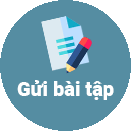Choose the word or phrase among A, B, C or D that best fits the blank space in the following passage.
The invention of stethoscopes
1.
A. Ø
B. the
C. some
D. a
2.
A. why
B. who
C. that
D. whom
3.
A. were trying
B. have tried
C. tried
D. try
4.
A. so heavier
B. as heavy
C. heavier
D. more heavy
5.
A. access
B. handle
C. face
D. notice
1.
Không dùng mạo từ khi đối tượng được nhắc đến là chung chung và không xác định được cụ thể.
Invented by a French physician, René Théophile Hyacinthe Laënnec, the stethoscope is a vital medical tool for doctors to listen to one body's internal sounds…
Tạm dịch: Được phát minh bởi bác sĩ người Pháp, René Théophile Hyacinthe Laënnec, ống nghe là một công cụ y tế quan trọng để bác sĩ lắng nghe âm thanh bên trong cơ thể
Chọn A
2.
A. why: tại sao
B. who: người mà (chủ ngữ)
C. that: cái mà
D. whom: người mà (tân ngữ)
The word "stethoscope" originates from the Greek words that mean "chest" and "observe".
Tạm dịch: Từ "ống nghe" bắt nguồn từ tiếng Hy Lạp có nghĩa là "ngực" và "quan sát".
Chọn C
3.
Dấu hiệu nhận biết thì hiện tại hoàn thành “since” (kể từ sau đó) => Cấu trúc thì hiện tại hoàn thành ở dạng khẳng định chủ ngữ số nhiều “doctors” (những bác sĩ): S + have + V3/ed.
Since then, many other doctors have tried to perfect that invention.
Tạm dịch: Kể từ đó, nhiều bác sĩ khác đã cố gắng hoàn thiện phát minh đó.
Chọn B
4.
Dấu hiệu nhận biết so sánh bằng “as” => Cấu trúc so sánh bằng: S1 + tobe + as + tính từ + as + S2.
David Littman made and improved a new stethoscope which was not as heavy as the previous ones and had better acoustics.
Tạm dịch: David Littman đã chế tạo và cải tiến một chiếc ống nghe mới không nặng bằng những chiếc trước đó và có khả năng cách âm tốt hơn.
Chọn B
5.
A. access (v): truy cập
B. handle (v): xử lý
C. face (v): đối mặt
D. notice (v): nhận biết
It will be connected to a smartphone app that can store the patients' data and notice heart problems within seconds.
Tạm dịch: Nó sẽ được kết nối với một ứng dụng điện thoại thông minh có thể lưu trữ dữ liệu của bệnh nhân và nhận biết các vấn đề về tim trong vòng vài giây.
Chọn D
Bài hoàn chỉnh
The invention of stethoscopes
Tạm dịch
Sự phát minh ra ống nghe







